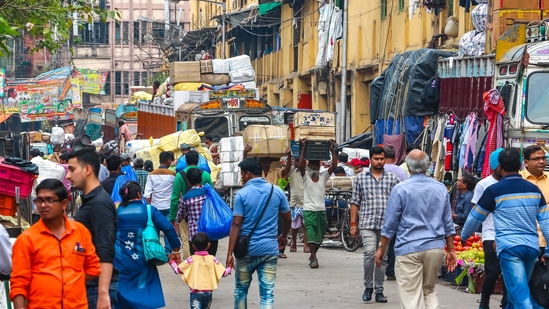Heatwave forecast as country logs first 40°C day of the year
India records first temperatures above 40°C this year, with heatwaves expected in coastal areas. February sees highest mean temps since 1901.
Parts of India have begun recording temperatures above 40 degrees Celsius for the first time this year, signalling an early onset of summer-like conditions, the India Meteorological Department (IMD) warned on Monday, predicting heatwave in pockets of the Konkans, coastal Karnataka and North Kerala.

The Kannur Airport in Kerala recorded the highest temperature of 40.4°C across the country’s plains on Monday, marking the first instance of temperatures crossing the 40-degree threshold in 2025.
While not quite a record – in 2023, Gujarat’s Bhuj recorded 40.4 degrees on February 16 – such temperatures are rare for anywhere in the country in the first two months of the year. Rarer still are heatwave conditions in February.
“In February so far, the mean temperature is the highest since 1901 over South Peninsula and Central India and the third-warmest for India overall,” said OP Sreejith, head of climate monitoring and prediction at the India Meteorological Department (IMD).
Another IMD expert explained parts of the west coast begin heating up first as summer temperatures set in over the country. “Heat propagates south to north. Heating is maximum over the west coast region at the end of February. In March, Gujarat, Odisha etc also start recording heat waves. There is propagation of heat from this region,” said M Mohapatra, director general of IMD.
Several coastal areas have already reported significantly above-normal temperatures. On Tuesday, Ratnagiri recorded 38.9°C, which is 6.9 degrees above normal, while Santa Cruz in Mumbai reached 38.4°C, exceeding normal temperatures by 6.4 degrees.
Goa-Panjim registered 37.4°C, nearly 5 degrees above normal, and Honnavara in coastal Karnataka hit 38.5°C, 6 degrees higher than average.
Maximum temperatures were markedly above normal (5 degrees or more) in parts of Jammu-Kashmir-Ladakh-Gilgit-Baltistan-Muzaffarabad, and appreciably above normal (3 to 5 degrees) along many areas of the west coast, as well as in parts of West Rajasthan and Gujarat.
The IMD officially considers December to February as winter months. On January 18, HT highlighted how rising temperatures across India are blurring seasonal distinctions. Analysis of IMD’s century-long temperature data shows the October-December post-monsoon season is warming at a rate of 1.01°C per century, followed by the January-February winter months at 0.73°C. Pre-monsoon (March-May) and monsoon (June-September) seasons are warming at relatively slower rates of 0.62°C and 0.45°C respectively.
While parts of the country face heat, northwestern India is expected to receive rainfall due to an approaching western disturbance. A trough in lower to upper tropospheric levels is affecting the Western Himalayan region, likely forming a low-pressure area over West Rajasthan and adjoining Pakistan within the 24 hours till Wednesday evening.
“We can expect rain in many parts of NW India in the next few days,” Mohapatra added.






